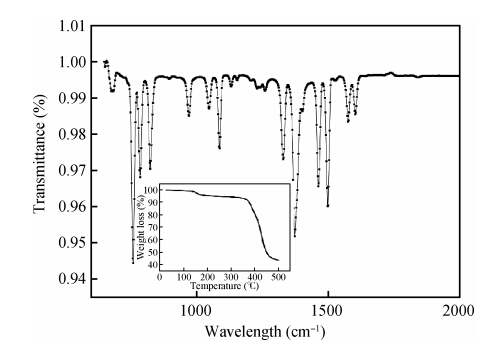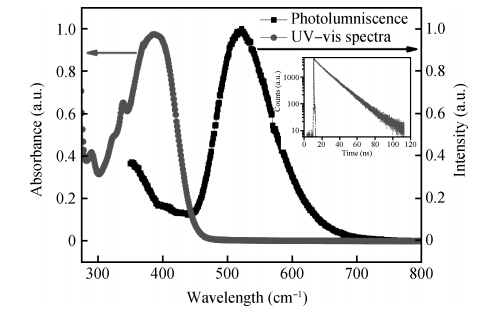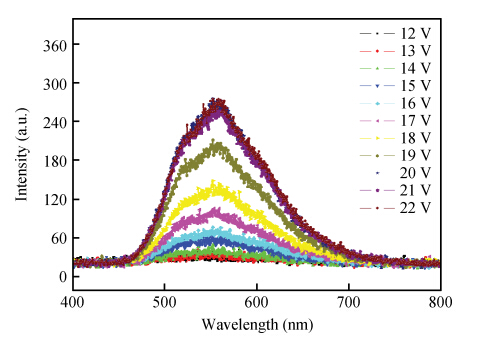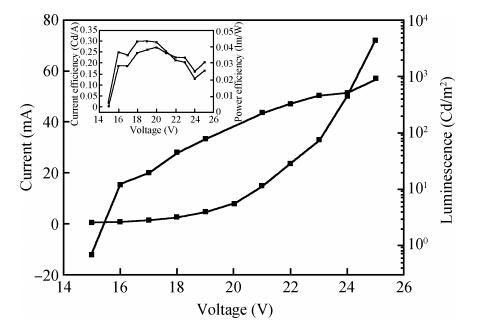| Citation: |
Rahul Kumar, Parag Bhargava, Ritu Srivastava, Priyanka Tyagi. Synthesis and electroluminescence properties of tris-[5-choloro-8-hydroxyquinoline] aluminum Al(5-Clq)3[J]. Journal of Semiconductors, 2015, 36(6): 064001. doi: 10.1088/1674-4926/36/6/064001
****
R Kumar, P Bhargava, R Srivastava, P Tyagi. Synthesis and electroluminescence properties of tris-[5-choloro-8-hydroxyquinoline] aluminum Al(5-Clq)3[J]. J. Semicond., 2015, 36(6): 064001. doi: 10.1088/1674-4926/36/6/064001.
|
Synthesis and electroluminescence properties of tris-[5-choloro-8-hydroxyquinoline] aluminum Al(5-Clq)3
DOI: 10.1088/1674-4926/36/6/064001
More Information
-
Abstract
A new electroluminescent material tris-[5-choloro-8-hydroxyquinoline] aluminum has been synthesized and characterized. Solution of this material Al(5-Clq)3 in toluene showed absorption maxima at 385 nm which was attributed to the moderate energy (π-π*) transitions of the aromatic rings. The photoluminescence spectrum of Al(5-Clq)3 in toluene solution showed a peak at 522 nm. This material shows thermal stability up to 400 ℃. The structure of the device is ITO/0.4 wt%F4-TCNQ doped α-NPD (35 nm) / Al(5-Clq)3(30 nm)/ BCP (6 nm)/ Alq3(30 nm)/ LiF (1 nm)/Al(150 nm). This device exhibited a luminescence peak at 585 nm (CIE coordinates, x= 0.39, y= 0.50). The maximum luminescence of the device was 920 Cd/m2 at 25 V. The maximum current efficiency of OLED was 0.27 Cd/A at 20 V and maximum power efficiency was 0.04 lm/W at 18 V. -
References
[1] [2] [3] [4] [5] [6] [7] [8] [9] [10] [11] [12] [13] [14] [15] [16] [17] [18] [19] [20] [21] -
Proportional views





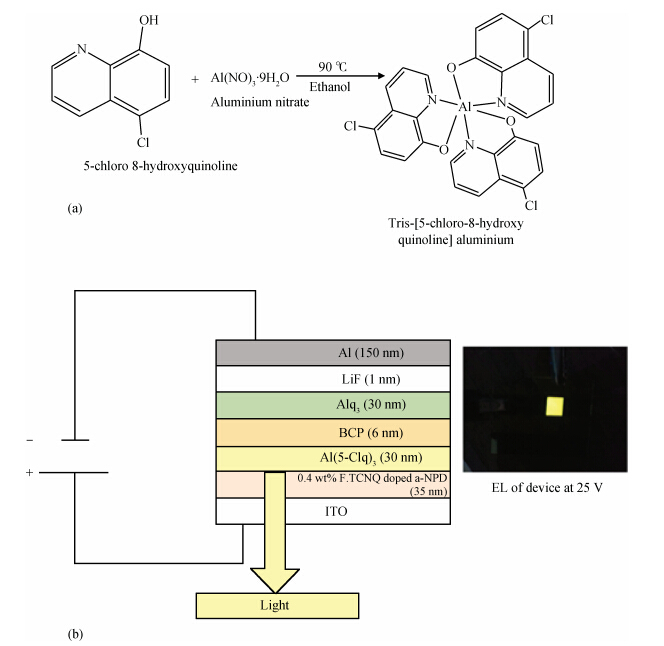
 DownLoad:
DownLoad:
